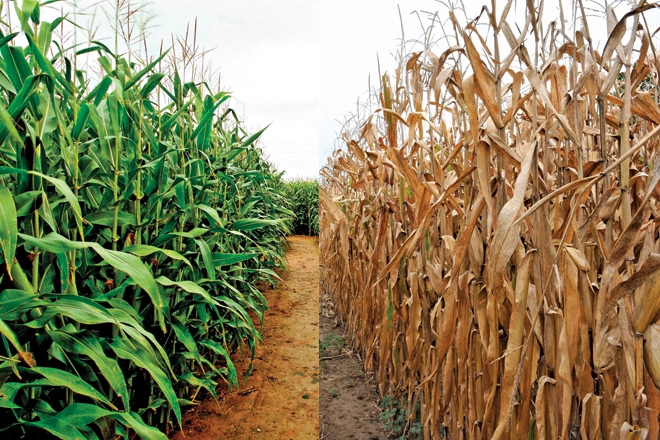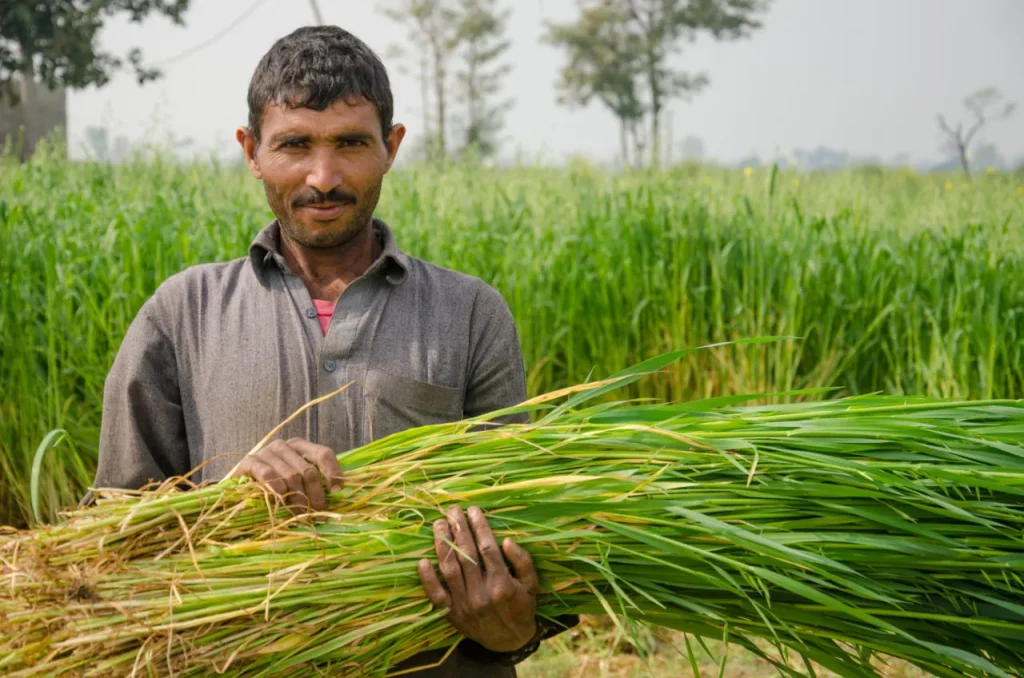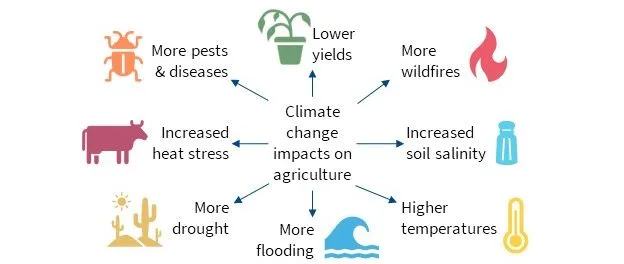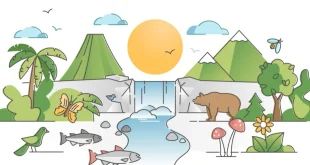
Introduction
Over the past several years, due to rising temperatures, northern Pakistan practiced a prominent shift in monsoon pattern and increased cyclone occurrence impacting the agricultural sector. As the population of Pakistan increases along with rapid urbanization, Pakistan falls as the fifth most vulnerable country in the world to climate change these climate change impacts will have devastating effects. https://thecliment.com/climate-change-and-its-alarming-impacts-on-the-environment
Pakistan is particularly vulnerable to climate and has been categorized as the 12th most adversely impacted country due to climate change impacts on agriculture and livelihoods. Greenhouse gas emissions (GHG) from the widespread use of fossil fuels are probably the major cause due to their heat-holding capacity in the upper atmosphere. This increase in global temperature augmented the global warming phenomenon and elicited climate change effects felt the world over.
Pakistan an Agriculture Economy
Pakistan’s economy is mainly based on agriculture, engaging almost 25 million people. Furthermore, With a 2 percent annual population growth rate, Pakistan ranks as the 6th most populous country globally. Recently, almost all agricultural land in Pakistan has been under cultivation, as the country is trying to meet the threshold limit of sustainable food security for its rapidly growing population.

Due to climate change, global temperature increases result in sudden changes in rainfall patterns that are closely linked to agricultural production, water, and forest resources. The intensity of rainfall has rigorously changed causing severe drought and devastating floods resulting in damage to fertile lands as well as infrastructure.
Climate change is not only disturbing rainfall intensity but also the amount of annual rainfall. Water conservation measures will need to be implemented as well as using the best irrigation scheduling technologies. Livestock adds approximately 41% of the greenhouse gas emissions in Pakistan. It is suggested that new and advanced feeding technologies, changes in animal feed composition, better and more effective livestock breeds, improved manure management practices, and grazing and pasture management will be beneficial in enhancing agricultural productivity as well as increasing the potential soil carbon sink.
Climate Change Impacts on Agriculture
Pakistan, due to its location, faces higher climate change risks compared to the global average. The land is mostly arid and semi-arid, and the rivers are mainly fed by the glaciers. As a result of global warming, glaciers are reducing rapidly; the economy is agrarian and therefore tremendously vulnerable. Pakistan has been facing increasingly bigger threats of irregularity in monsoon weather and the amount of rainfall every year causing great floods and extensive droughts in the past few years. Therefore, the Water Security, Flood Security, Energy Security, and agriculture sectors of Pakistan are at grave risk on account of these aforementioned reasons.
Spate irrigation is a crop irrigation technique that consists of diverting seasonal stormwater from rivers, valleys, gullies, and riverbeds by gravity onto farmland situated at a lower elevation than the floodwater practiced in Pakistan.

Rabi and Kharif crops both are cultivated in Pakistan. One of the major rabi crops is wheat while Kharif crops include sugarcane, rice, maize, turmeric, etc. Kharif crops are grown in summer beginning from February to August, the main crops are sugarcane, cotton, rice, and maize. Both in irrigated and spate farming systems, crops are extremely sensitive to water quantity and temperature fluctuations.
A significant effect of climate change is observed on wheat crops due to several agronomic and socioeconomic reasons like water availability, pesticides, and labor accessibility due to seasonal disparities in weather conditions. Heavy summer and Kharif rainfall are imperative for the production and yield of winter (Rabi) crops. The International Institute for Applied Systems Analysis (IIASA), Austria, conducted a case study and found that the revenue of all the main crops and cereals will shrink particularly when wheat production drops maximally by 2080.
Wildfires and Agriculture
Due to climate change wildfire threads are increasing. Wildfires cause major risks to farmlands, grasslands, and rangelands. Changes in temperature and rainfall will also very expected to increase the occurrence and range of weeds, insects, and diseases. There is a greater need for weed and pest control. Changes in temperatures and precipitation can affect the timing mismatch between the plant’s bloom and pollinator emergence. As a result pollination decreases.
Coastal Agricultural communities are threatened by sea level rise and storms. These threats include erosion, agricultural land losses, and saltwater incursion, which can contaminate water supplies. These threads can worsen due to climate change.
After the Industrial Revolution, the industrial release of Green greenhouse gases (GHGs) intensified. GHGs contain massive global warming potential and have an extended lifetime (for decades to centuries) to increase the warming process.
Health Challenges to Agricultural Workers and Livestock
Agricultural workers face some climate-related health risks. These include exposure to heat and other extreme weather, more pesticide exposure due to prolonged pest presence, disease-carrying pests for example mosquitos and ticks, and air quality. Language hurdles, lack of access to health care, and other factors can multiply these risks. Heat and humidity can also affect the health and production of animals raised for meat, milk, and eggs.
What We Can Do
We can reduce the impact of climate change on agriculture in many ways, including the following:
- Farmers can use weather forecasting tools, plant cover crops, and take other steps to help achieve climate-related production threats.
- Livestock producers can get help in improving methane, a strong greenhouse gas, emitted from biogas production when manure decomposes.
- Farmers can purposefully apply fertilizers, keep their animals out of water bodies, and take more actions to reduce runoff containing nutrients.
- Implement research-proven methods to reduce the impacts of climate change on crops and livestock, such as reducing the use of pesticides and improving pollination.
- Reduce your carbon footprint by properly planning your shopping trips carefully and properly storing food.
- https://www.worldbank.org/en/topic/climate-smart-agriculture
 The Climent Respect your roots, Protect your planet
The Climent Respect your roots, Protect your planet
